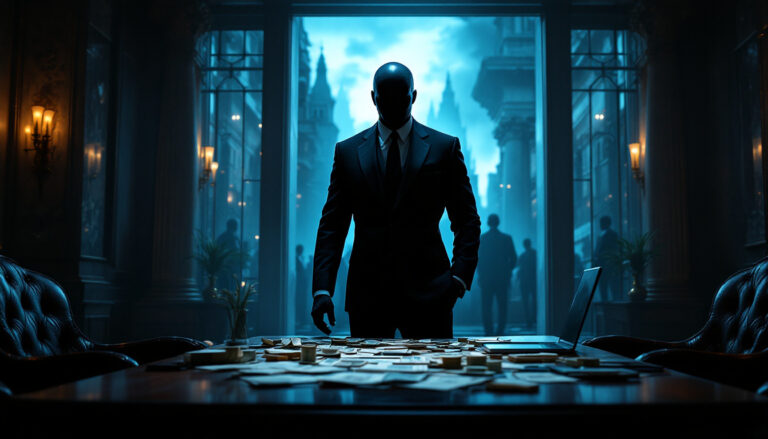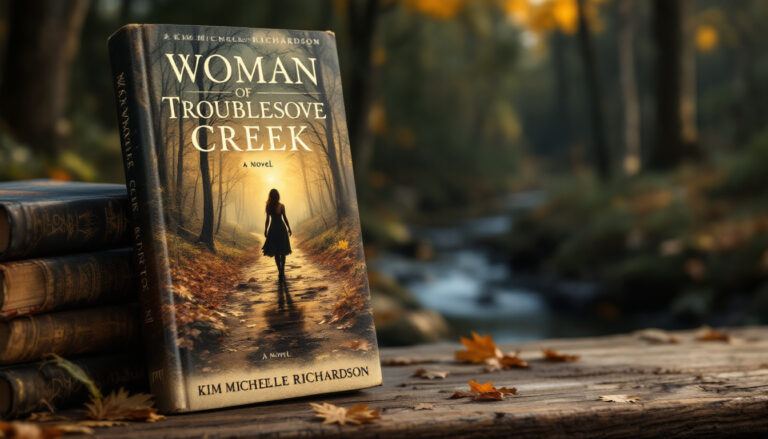All the Light We Cannot See by Anthony Doerr – A Profound Book Review
History, humanity, and the haunting echoes of war converge in Anthony Doerr’s All the Light We Cannot See. Set against the backdrop of World War II, this Pulitzer Prize-winning novel follows the intertwined lives of two young protagonists: Marie-Laure, a blind French girl navigating occupied France, and Werner, a German orphan conscripted into the Nazi regime. With its poignant storytelling and intricate exploration of resilience amidst chaos, this critically acclaimed work captures the fragility and strength of the human spirit. Whether you’re drawn to its vivid settings or its compelling characters, this novel offers much to reflect on and discuss.
Overview of the Story
Anthony Doerr’s All the Light We Cannot See tells a spellbinding story set during the dark years of World War II, expertly weaving together the lives of two unlikely protagonists. The narrative alternates between Marie-Laure LeBlanc, a blind French girl, and Werner Pfennig, a gifted German boy, unveiling their personal battles amidst the chaos of war. With its unique perspectives and intricate storytelling, the novel highlights resilience, human connection, and the ripple effects of war.
Introduction to Marie-Laure LeBlanc
Marie-Laure LeBlanc, one of the novel’s protagonists, is introduced as a young girl growing up in Nazi-occupied France. Having lost her eyesight at the age of six, Marie-Laure’s world is shaped by her heightened reliance on other senses and her indomitable spirit. Despite her blindness, her intellect and resourcefulness shine as she deciphers the complexities of her world through miniature models crafted by her father.
The novel intricately ties Marie-Laure’s life to the mysterious Sea of Flames, a legendary gemstone said to grant immortality while bringing misfortune to its owner. This rare gem becomes a central thread in her story, adding a layer of intrigue and danger. Caught in the midst of the Nazi invasion, Marie-Laure’s courage and resolve serve as a powerful reminder of the strength of the human spirit. You can read more about Marie-Laure’s character development and journey here.
Werner Pfennig’s Journey in Nazi Germany
Werner Pfennig, the novel’s other central figure, is a German orphan raised in a mining town alongside his younger sister, Jutta. Werner’s fascination with science, particularly radios, is evident from an early age. His rare ability to repair and understand radios paves the way for extraordinary opportunities, but it also inadvertently pulls him into the orbit of the Nazi regime.
As his talents are discovered, Werner enters the Hitler Youth, an organization designed to mold young men into soldiers loyal to the Reich. Though intellectually curious and kindhearted, Werner struggles with the moral compromises he must navigate as he progresses to military service. His journey reflects the ethical dilemmas faced by individuals swept into the tides of history, where personal desires collide with the expectations of a totalitarian regime. Learn more about Werner’s character and his internal conflict here.
Intertwined Fates and Themes of Connectivity
One of the novel’s most compelling elements is how the lives of Marie-Laure and Werner become intricately intertwined. Their connection is not immediate but is bridged through the invisible yet profound power of radio transmissions. Radios serve as a metaphor for unseen connections, symbolizing how people’s lives can intersect in unexpected ways even during times of extreme separation and hardship.
The novel repeatedly emphasizes the theme of connectivity, illustrating how individuals’ actions ripple across borders, cultures, and ideologies. Through Marie-Laure and Werner’s stories, the book subtly asks: How do we remain connected to our humanity in a world fractured by war? Their crossing paths represent a glimmer of hope, reminding readers of the shared threads that bind all lives together. For a detailed exploration of these interwoven themes, check out this analysis.
In uncovering Marie-Laure and Werner’s stories, Doerr seamlessly showcases the interconnectedness of humanity against the backdrop of one of history’s darkest eras. Their unique perspectives bring both sides of the war into sharp focus, challenging readers to reflect on the complexity of human experience.
Themes Explored in the Novel
Anthony Doerr’s All the Light We Cannot See goes far beyond a traditional war story, embedding deeply resonant themes throughout its narrative. By highlighting the human condition under extraordinary circumstances, Doerr explores the devastation of war, the moral conflicts it provokes, and the dual-edged power of technology. These themes create a rich tapestry that lingers in the reader’s mind long after the final page.
The Devastation of War and Human Resilience
The novel paints a vivid picture of World War II’s destruction, offering a stark portrayal of occupied France and the struggles faced by those who lived through it. Cities crumble, lives are torn apart, and the horrors of war are omnipresent. Yet, amidst the darkness, the strength and benevolence of the human spirit shine through. The lives of Marie-Laure and Werner become testimonies to the resilience individuals can muster in dire situations.
For Marie-Laure, survival is not only about fleeing the invaders but also about holding on to her dignity and independence despite her blindness. Werner, too, embodies resilience, though his experience reveals the cost of endurance when weighed against the compromises forced by war. These characters remind us that even in times of chaos, glimmers of humanity persist—through moments of kindness, bravery, and connection. For a closer look at how the novel addresses devastation and resilience, explore this detailed breakdown of its themes.
Morality in Times of Conflict
Doerr masterfully examines the blurred lines between right and wrong during wartime, presenting moral dilemmas that challenge his characters at every step. Werner, a talented and compassionate boy, is torn between his aspirations and the harsh reality of being conscripted into the Nazi regime. His work with radios—designed to serve as a tool for destruction—forces him to confront the delicate balance between duty and conscience.
Similarly, other characters wrestle with their choices in situations where survival drives actions that might otherwise seem unthinkable. How does one choose between personal safety and protecting others? The novel doesn’t offer easy answers but instead highlights the gray areas that define moral ambiguity in wartime. For a broader exploration of this conflict, you might find this analysis of moral themes in the book insightful.
The Role of Science and Technology
Science and technology play a central role in All the Light We Cannot See, most notably through the motif of the radio. Radios symbolize connection, as they bring people together through broadcasts and shared stories. Yet, they also function as instruments of war, enabling the Nazis to track and destroy their enemies. This duality sets up a broader commentary on how technology can both unite and devastate.
For Werner, radios represent an early fascination with the power of curiosity and knowledge. As the story unfolds, however, they lead him into a morally complex role where his skills are used for harm rather than good. Meanwhile, for Marie-Laure, the broadcasts she receives through her uncle’s radio serve as beacons of hope and defiance in the face of oppression. This layered use turns radios into a potent symbol of both humanity’s light and shadow. To learn more about this thematic connection, visit this in-depth analysis.
The novel’s exploration of themes is engrossing not just because of the depth of its insights but also because of its universal relevance. Through war, morality, and technology, Doerr invites you to confront enduring questions about human nature and the forces that shape our world.
Writing Style and Structure
Anthony Doerr’s All the Light We Cannot See captivates readers not only with its engrossing plot but also through its unique and sophisticated writing style. With a masterful combination of vivid imagery, sensory-rich details, and an unusual narrative structure, Doerr creates a reading experience that feels both intimate and expansive. The novel invites readers to see and feel the world as its characters do—turning every sentence into a small masterpiece. Let’s take a closer look at how these elements contribute to the book’s brilliance.
The Power of Descriptive Imagery
One of the defining features of Doerr’s prose is his remarkable use of descriptive imagery. He artfully crafts every scene with rich, immersive details that awaken the senses. Take, for example, his description of Saint-Malo, the walled city where much of the story takes place. Doerr writes of “cobblestones wet with the memory of rain” and “sea air laced with the tang of salt and seaweed,” encapsulating the atmospheric beauty of the town while echoing its wartime fragility.
This attention to detail enables readers to feel deeply connected to the characters’ environments. The vividness of Doerr’s descriptions mirrors Marie-Laure’s heightened awareness of sound, smell, and touch due to her blindness. When she steps carefully through her miniature models of the city, Doerr’s words guide readers through her world as if they, too, were running their fingers over tiny rooftops and alleyways. His poetic approach transforms ordinary moments into visceral experiences that stay with the reader long after they’ve turned the page. For more examples of his eloquent use of imagery, this analysis dives into how he conveys sensory depth.
Moreover, Doerr utilizes imagery to emphasize the tension between beauty and destruction during World War II. Bombardments tear through idyllic landscapes, and the juxtaposition leaves a lasting impression, almost functioning like a painter layering contrasts on a canvas. His use of language achieves a duality, reflecting both life’s fragility and its resilience amid chaos. This ability to imbue each scene with such rich texture and emotion is part of what makes Doerr’s writing so compelling. As described in this detailed review, his evocative imagery enhances the novel’s ability to transport readers to another time and place.
Non-Linear Narrative and Short Chapters
Doerr employs a non-linear narrative structure that alternates between timelines and perspectives, creating a storytelling rhythm as intricate as a symphony. This approach keeps the plot dynamic, ensuring details from one timeline resonate powerfully when revisited from another. The story moves between Marie-Laure’s and Werner’s points of view while transitioning through different stages of the war, offering readers a mosaic-like view of events that gradually coalesce into a fuller picture.
The chapters themselves are often short—sometimes just a single page or even a few paragraphs. This brevity contributes to the novel’s pacing, mirroring the urgency and unpredictability of life during wartime. Short chapters encourage readers to pause briefly before diving into another vivid snapshot, maintaining engagement and heightening the emotional impact of each piece of the story. By structuring scenes with this rapid alternation and compression, Doerr ensures that readers are constantly propelled forward, balancing a mix of suspense and quiet reflection.
Additionally, the choice to alternate perspectives allows readers to not only connect deeply with both protagonists but also to explore the stark contrasts and striking parallels in their worlds. Werner’s morally complex journey as part of the Nazi regime feels worlds apart from Marie-Laure’s life in occupied France. However, their shared struggles—navigating survival, loss, and courage—create a unifying thread that becomes increasingly evident as the novel progresses. As highlighted in this discussion of the book’s structure, Doerr’s use of parallel storylines elevates the thematic complexity of the work.
Overall, this structural choice of weaving past and present, coupled with the concise chapter format, invites readers to piece together the narrative in an almost cinematic way. Every scene, no matter how short, feels like a puzzle piece placed perfectly within the larger tapestry of the story. The non-linear approach not only challenges readers but rewards them with an emotional payoff that lingers long after the final chapter.
By intertwining poetic descriptions with a meticulous structure, Doerr creates a novel that feels both timeless and fresh—a story you can enter from any direction and still come away transformed. If you’d like further insights into this, check out this resource on the interplay of structure and imagination.
Critical Reception and Awards
Anthony Doerr’s All the Light We Cannot See has captured the hearts and minds of critics and readers alike, earning its place as one of the most celebrated novels in recent years. From its stunning prose to its emotional depth, the book’s journey to universal acclaim is a testament to its literary brilliance.
Critical and Popular Acclaim
When it was first published in 2014, All the Light We Cannot See quickly garnered widespread acclaim across audiences. Critics praised Doerr’s remarkable ability to juxtapose the brutality of World War II with moments of humanity and resilience. The novel’s intricate yet accessible storytelling, coupled with its vivid sensory descriptions, has made it a favorite among casual readers and serious literary enthusiasts alike.
The book was lauded for its unique narrative structure, which seamlessly shifts between perspectives and timelines. Reviewers highlighted how the alternating chapters created a compelling rhythm, keeping readers engaged from start to finish. Many noted that Marie-Laure’s blindness and Werner’s moral struggles were portrayed with sensitivity and realism, adding depth to their characters and immersing readers in their emotional journeys.
Readers also embraced the novel’s universal themes of hope, courage, and connectivity, making it a bestseller and a staple recommendation in book clubs for years. Its ability to resonate across diverse audiences was a key factor in its success, and its popularity remains strong today. This review highlights the lasting impression it leaves on readers.
Impact of the Pulitzer Prize
The novel’s critical success reached a crescendo in 2015 when it won the Pulitzer Prize for Fiction, cementing its legacy in modern literature. The Pulitzer committee described the book as an “imaginative and intricate novel inspired by the horrors of World War II,” emphasizing its powerful storytelling and emotional depth. Receiving this prestigious honor significantly elevated the book’s profile, drawing an even wider audience to its pages. Learn more about the Pulitzer Prize win.
Winning the Pulitzer contributed to a surge in sales, securing All the Light We Cannot See’s position on bestseller lists for months. Its recognition also led to increased discussions in academic and literary circles, with the book being added to college syllabi and chosen as common reading in institutions like Case Western Reserve University. Explore this feature on its impact.
In addition to the Pulitzer Prize, the novel was also a finalist for the National Book Award and received numerous other accolades, including the Andrew Carnegie Medal for Excellence in Fiction. Its enduring popularity is further evidenced by its continued ranking in notable “best of” lists. With a Netflix adaptation on the way, the book’s legacy is set to expand into entirely new mediums, introducing its story to a global audience.
The Pulitzer was a defining moment for All the Light We Cannot See. It didn’t just affirm the novel’s greatness but also ensured its themes and artistry reached readers far beyond its initial publication buzz, firmly embedding it in the canon of contemporary classics.
Why You Should Read ‘All the Light We Cannot See’
Anthony Doerr’s All the Light We Cannot See is more than just another historical fiction novel; it’s a deeply moving exploration of the human spirit in the face of unimaginable challenges. If you’ve been considering adding this Pulitzer Prize-winning novel to your list, there are plenty of reasons to start reading today. From its captivating characters to its rich historical backdrop, this book offers an experience unlike any other.
Emotional Depth That Stays With You
Some books entertain, while others linger in your mind long after you’ve finished reading them. All the Light We Cannot See belongs to the latter category. Through the lives of Marie-Laure and Werner, Doerr paints a poignant picture of resilience, hope, and perseverance during one of history’s darkest periods.
Marie-Laure, a blind girl navigating wartime France, and Werner, a boy swept into the Nazi regime, may come from vastly different worlds, but their stories feel universal. The emotional contrasts of innocence and loss strike a chord with readers regardless of background. Their struggles are portrayed with sensitivity and nuance, making it impossible not to become invested in their journeys. For more insights on the emotional pull of this novel, check out this review highlighting its impact on readers.
A Rich and Nuanced Historical Perspective
Set during the tumultuous years of World War II, the novel goes beyond the usual war narratives. Instead of focusing solely on battles or strategy, it examines the textures of daily life and survival under oppressive regimes. Doerr gives a voice to characters from various social and moral spectrums, offering readers a fuller understanding of the time.
The details of occupied France and the role of technology in combat create an immersive historical backdrop. But what sets this novel apart is its exploration of how war affects individuals in personal, often unrecorded ways. Marie-Laure and Werner’s experiences shed light on how ordinary civilians and young soldiers became caught in the crossfire of history. If you want a book that combines fiction with a meaningful historical lens, take advantage of this thoughtful analysis of its historical depth.
Timeless Themes That Resonate Today
At its heart, All the Light We Cannot See is a story about the unseen connections that bind us all together. The recurring motif of radios—bringing people closer while simultaneously being used as tools of war—represents the duality of technology and human communication. The novel forces you to reflect: How do we use our tools and talents? Do they uplift others or contribute to division and harm?
Additionally, the book challenges readers to consider themes of moral ambiguity. Werner’s conflicted role within the Nazi regime and Marie-Laure’s determination to uphold her independence against all odds speak to the choices we must make in life. The timeless questions Doerr raises echo in today’s complex world, making the novel relevant beyond its historical setting. For additional reflections on these enduring themes, visit this engaging breakdown.
A Story That Appeals to All Readers
Whether you love historical fiction, are drawn to character-driven stories, or appreciate beautifully written prose, All the Light We Cannot See has something for you. The short chapters and alternating viewpoints ensure the pace never lags, making it accessible even for those who might shy away from longer reads. It’s both literary and approachable, offering something for seasoned readers and beginners alike.
If you’re looking for a book that combines compelling storytelling with deeper meaning, this is one you won’t want to miss. Many have expressed how profoundly this novel has affected them, as seen in testimonials like this personal account from a Reddit reader. Why not see if it has the same effect on you?
Conclusion
Anthony Doerr’s All the Light We Cannot See continues to resonate with readers for its profound exploration of humanity amidst war. Its vivid storytelling, layered themes, and relatable characters make it more than just historical fiction—it’s a reminder of connection, resilience, and the choices that shape us.
This book isn’t just a story; it’s an experience. It educates, inspires, and invites ongoing reflection on our own lives. For lovers of literature and history alike, it remains an essential read that stays with you long after the final page.
What did you take away from this novel? Share your thoughts and join the conversation—this is a book that deserves to be discussed.







